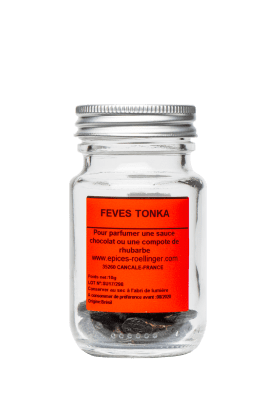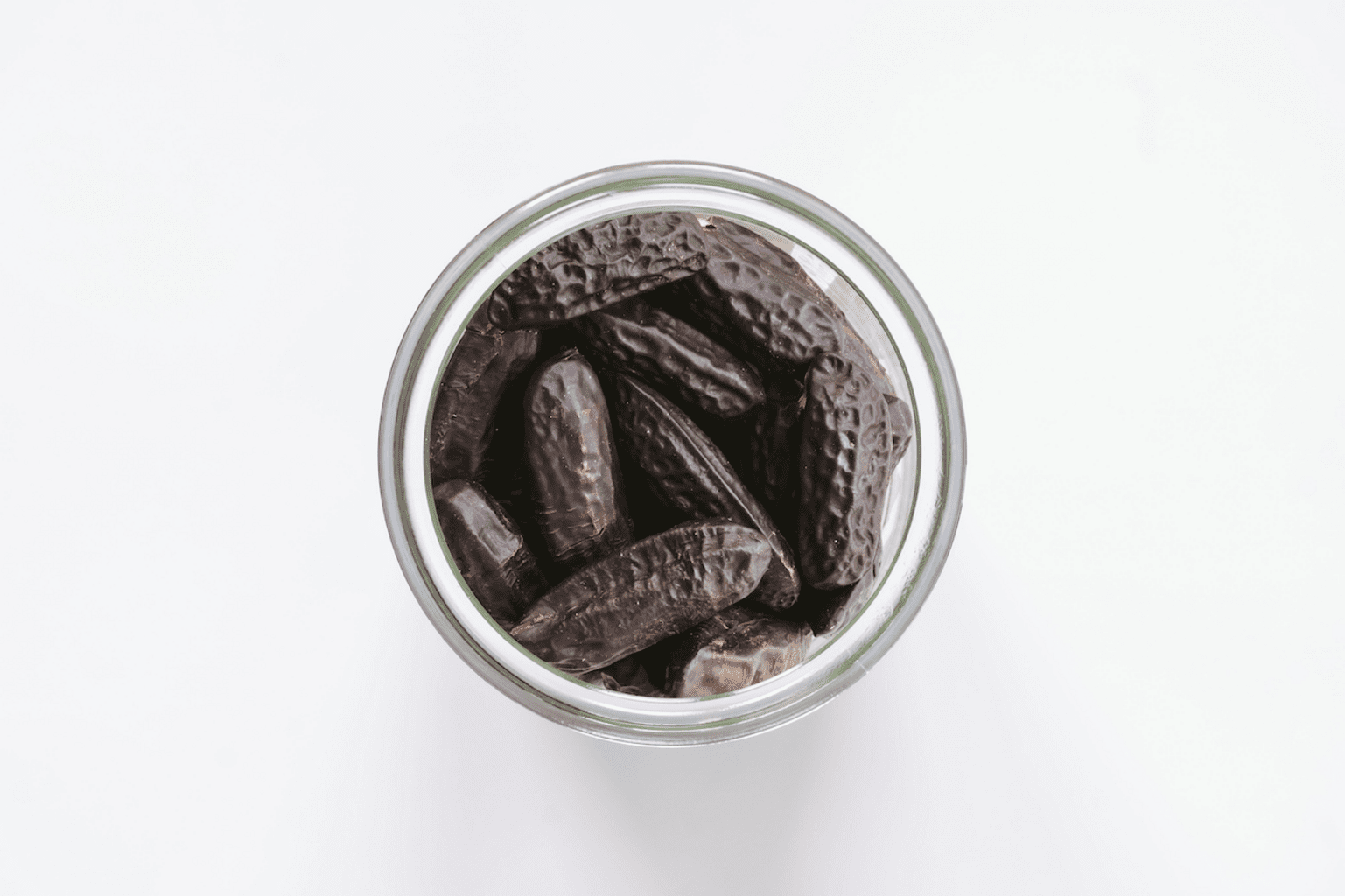Tonka beans

Ingredients: Tonka Bean from organic farming
Coumarin is the dominant aroma with hints of vanilla, caramel, almond, honey, and fresh mown hay.
€5.70
20 g
This product is temporarily unavailable. Receive an email as soon as this product is available again:
Recommendations
Tonka beans can be grated or ground in a mortar and pestle. They can also be infused in a liquid.
Tonka beans can be used in place of vanilla in desserts (rice pudding crème brûlée, semolina cake). On the savory side, we recommend adding it to vegetable purées, (parsnips, celeriac, sweet potato) and or mashed potatoes.
WARNING : Tonka beans are natural sources of coumarin and so should be used sparingly. Excessive coumadin consumption can cause nausea, dizziness and headaches.
-
Allergens
Absent, except for cross-contamination.
May contain traces of sesame, celery, mustard, soy. - Origin Brazil
- Storage / Use In a cool, dark, dry place.
€285 / kg
Olivier Rœllinger's words
Tonka beans must be grated, like nutmeg.
They can be used the same way as vanilla, in milk-based desserts, custards and creamy rice pudding, but also in stewed fruit and tarts.
I particularly like Tonka beans in a chocolate sauce or with stewed rhubarb, but also in a shellfish or seashell broth with a slight suggestion of chili.
Story
Tonka beans (Coumarouna odorata) are native to Central and South America. The spice is the long, bean shaped seed from the pod of the tonka tree, which is a type of teak.The seeds must be dried several months for their flavors and aromas to develop.
Indigenous peoples in Brazil were the first to use tonka beans to flavor their tobacco; the Amsterdamer tobacco company borrowed this idea for their product as well.
Perfumers were the first to launch tonka beans in Europe (Guerlain’s Shalimar) before they were discovered by pastry chefs at the start of the 21st century.
